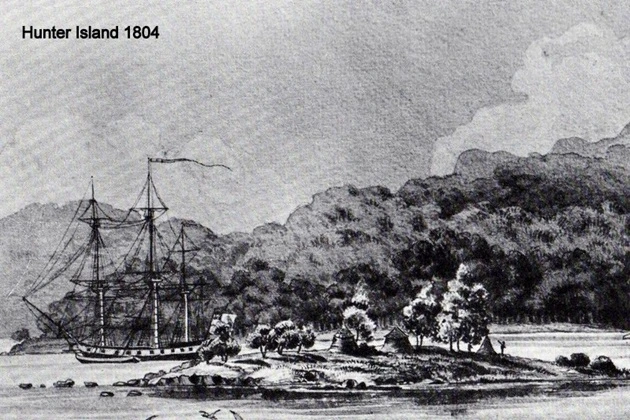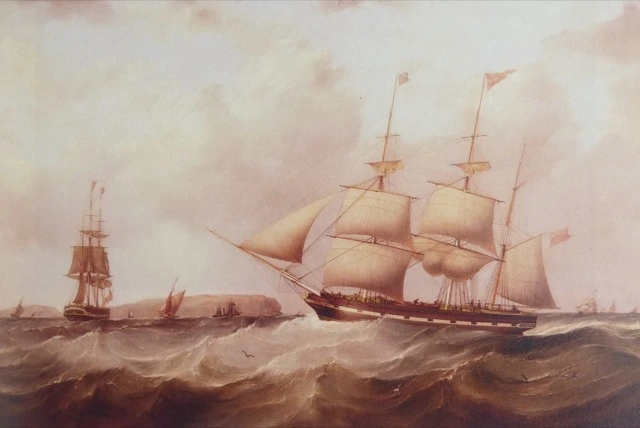The ship that hunted itself: oddest naval actions

Since ancient times, sailors have been treated uniquely. These people sparked respect, jealousy, and possibly even miscommunication—not apathy. Certain people cannot spend weeks or months at sea without seeing land. Fisheries, transportation, and research were the main priorities of marine careers in the past.
However, as the idea of a unitary state developed, a navy became necessary. There were great generals and admirals. Some became famous for their victories, and others for making non-standard decisions.
5 oddest naval actions
1. Land boats and sailors

In 1915, the Entente forces tried to open another front in East Africa. The German colonies had a natural fortification — Lake Tanganyika, where two warships cruised. The main problem was the armed steamer Hedwig von Wissmann, which did not allow crossing the water barrier. V I S I T A F R I N I K . C O M. Two more features need to be considered here: Lake Tanganyika is the longest in the world and has no access to the sea. It cannot simply be bypassed, especially in the territory occupied by the enemy, and it is impossible to sail there. Only one option was left — to drag parts of the British Navy over land.
The operation was developed by John Lee, who immediately abandoned the idea of full-size ships in favor of two small boats. Mimi (Meow-meow) and Toutou (Woof-woof) were built in the UK and transported by transporters to Cape Town. Next, the boats traveled 4,500 kilometers by train to the Belgian Congo.
The last 250 kilometers of the ship were dragged along the ground through the impenetrable jungle. All this time, the crew of sailors stayed close by, enduring all the hardships. Finally, “Mimi” and “Toutou” emerged as the familiar elements.
An unexpected attack caused the Germans to lose the small steamer Kingani, which the British captured and renamed Fifi. A few weeks later, Hedwig von Wissmann was sunk. There was no more fighting on Lake Tanganyika. The boats remained in Africa forever, performing a transport function. Pretty soon, they used up their safety margin and were flooded.
2. Her Majesty’s Island

In 1804, the British navy captured the small island of Diamond Rock, which was strategically important. It provided an excellent view, 180 meters above the water’s surface. From here, it was planned to monitor the movement of ships heading to the Caribbean. Fortifications were built on the island, and guns and freshwater supplies were placed.
A piece of land inhabited only by sailors lived according to the regulations of the naval forces. Moreover, Admiral Samuel Hood added the prefix HMS to the island’s name, which means “Her Majesty’s Ship.” In this way, Hood probably wanted to maintain personal control over the promising customs post because the ships remained in his charge when all the newly incorporated territories belonged to the crown.
Later, following the example of Diamond Rock, Britain will have a whole fleet of “stone frigates.” The current situation did not suit France. In May 1805, Napoleon sent his squadron led by Admiral Villeneuve. The island was surrounded, and the artillery exchange lasted two weeks.
Sixteen ships and 350 soldiers took part in the final assault. The French irretrievably lost three ships, and several more were damaged. In addition, about 50 people were killed. However, the British, who were blocked on the island, spent all their ammunition and lost their water supply. The island ship was doomed, and on June 3, 1805, a white flag was hung over the garrison.
3. The ship that pretended to be an island

In early 1942, the Imperial Japanese Navy crushed the Allies in the Java Sea. Holland finally lost control of the colonies, and the remnants of the naval forces retreated to Australia. The Japanese wanted to achieve complete defeat, so the pursuit continued, and in three days, several more Dutch ships were destroyed, which did not resist.
Only the minesweeper Abraham Crijnssen remained afloat, which had no chance in direct combat. It was necessary to remain unnoticed in a sea teeming with enemy ships, submarines, and reconnaissance aircraft. The task seemed unrealistic, but someone from the team developed a non-standard idea. Vegetation, earth, and rocks were dragged aboard Abraham Crijnssen. The exposed surfaces were painted gray. Soon, the ship began to look like a small island, like hundreds of others in that region.
To avoid attracting attention, the boat remained motionless during the daylight hours, clinging to the shore. As night fell, the “island” began to move. Thus, the team managed to get to Australia safely by walking quietly, covering mile after mile. In the following months, the minesweeper was modernized, and it went through the entire war and is now in the Naval Museum.
4. Cheese kernels

In the 1820s, a wave of liberation movements swept through South America. Seeing the metropolis’s weakness, the former colonies were coming out from under Spain’s rule. However, the same process provoked many new armed conflicts. The old borders drawn by European colonialists did not consider the indigenous peoples’ historical context and cultural characteristics.
One of these wars unfolded between Uruguay and the Brazilian Empire. During the next naval battle, the crew of the Uruguayan vessel used up all ammunition. The enemy ship remained in range and seemed to be preparing for a rendezvous. After a little thought, the captain ordered the stocks of Dutch cheese to be brought on deck. The cheese wheels, lying in the hold for months, were as hard as a stone. They loaded the guns with them.
The first shots did not reach the target, but the gunners did not give up until one cheese ball landed directly into the mast of the Brazilian ship. Several sailors were injured, but the psychological effect was much more important. The Brazilian captain gave the order to withdraw from the battle. He thought it would be better than the humiliating prospect of being drowned by cheese kernels.
5. The ship that hunted itself

The pride of the German civil shipbuilding Cap Trafalgar was launched on April 1, 1914. It was a luxury liner designed for voyages across the Atlantic Ocean. However, the First World War changed the plans. The stained hands of the sailors leaned on the railing decorated with gold. The spacious halls for dinners with music, furnished in the latest fashion, were now occupied by supplies and bunks.
Thus, the Trafalgar pleasure Cap turned into a well-armed cruiser. In addition, the ship was disguised as the ocean liner Carmania, which belonged to Britain. The main task of the captain of Cap Trafalgar was to impede British shipping in the Atlantic. However, there was one key thing that German intelligence did not know about. The Carmania was similarly converted into a battlecruiser and had similar tasks, only about the German fleet.
On September 14, 1914, the captain of the Carmania was ordered to find a replica of his ship and destroy it. The meeting took place off the coast of Brazil. As a result of the brutal duel, Cap Trafalgar went down. The Carmania, which had received many holes, managed to get to the nearest base and get up for repairs. This is the only time in history when two ocean liners came together in battle. Strange military methods that were used




